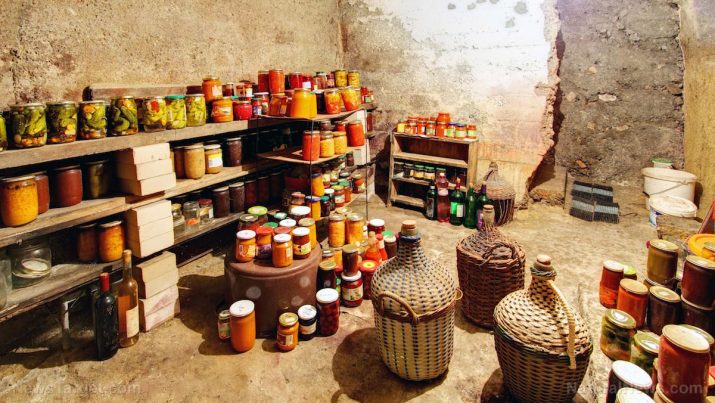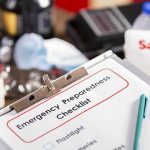
Securing your stockpile: How to keep your food supplies dry and pest-free
Friday, February 12, 2021 by Arsenio Toledo
http://www.naturalnewstips.com/2021-02-12-how-to-keep-food-supplies-dry-pest-free.html

Your food supply’s two biggest enemies are moisture and pests. This is because your extra food is most likely being stored in an area that’s darker, damper and quieter than any other part of your home. These three conditions are perfect for unwanted pests to thrive and for moisture to seep in through the cracks on the walls and ruin your food supply.
Fortunately, there are certain precautions you can take to ensure the safety of your food stores. Here are five things you can do to protect your food supply. (h/t to BioPrepper.com)
Seal your storage room
Whichever room you’re keeping all of your food in, there’s a chance that that room has cracks and holes where pests can get through. If you find any cracks in the room, repair them. Examine your door, look at how many gaps there are and seal them all. Consider placing screens over your doors and windows, especially if they lead outside.
Waterproof the walls
Once you have sealed your room, you need to waterproof your walls. Pests might not be able to get in, but some of them might be around. One way to make sure these pests die out is to deprive them of any water source they can access and live on.
Check on your pipes to make sure none of them are leaking. If there are any drains in your storage room, plug them up especially when they aren’t being used. Consider insulating your pipes and walls. This can prevent water particles from forming due to condensation and humidity. Finally, repaint your storage room walls with waterproof paint.
Set traps for vermin and other pests
You might be able to make your food storage room as pest-free as humanly possible, but accidents still happen. One of your screen doors might have a hole in it or you might leave one of the drains unplugged for a bit too long. Before you know it, a mouse is ripping into the packaging of one of your foods.
Place as many traps as you feel you need in your food storage room. Some well-placed rat cage traps will work wonders. Alternatively, you can list the help of Nature’s professional rodent hunter, the cat. With enough refurbishments and plenty of food, you can turn your storeroom into a wonderful haven for your pet cats.
Refrigerate and freeze as much food as you can
The temperature in your storage room should not go above 40 F. At this temperature, bacteria can start growing on “high-risk” foods, such as raw and cooked meat, seafood, dairy and egg products and ready-to-eat meals.
This is why as long as power is available, the best thing you can do for your emergency food is to freeze or refrigerate as many items as you can. The temperature in your fridge should be below 40 F while the temperature in your freezer should ideally be below 5 F.
Bacteria that cause food poisoning can grow in frozen food while it is thawing. So, if you’re going to take some of your emergency food out to eat, avoid refreezing it. Food that has been frozen a second time is likely to have a high amount of bacteria growing on it. (Related: Food storage tips: How much food and water do you need to survive for 3 months?)
Repackage your food into air-tight containers
Air can also be dangerous for your food. Consider repackaging your food into air-tight containers like jars and cans to stop them from having nasty reactions with oxygen and other elements in the air. Repackaging your food into solid, glass jars or airtight cans also helps protect your food against pests and moisture.
For dry foodstuffs like rice, pasta, nuts and other grains, invest in large plastic buckets with gamma seals that can store large amounts of these different foods.
Once you’re confident that your food storage room is secure, start moving your emergency food supply in there. Don’t forget to keep stocking up on food and to use any food items that are close to their expiration dates.
Sources include:
Tagged Under: Tags: bug out, disaster, emergency food, Food storage, food supply, pests, preparedness, prepper, prepping, SHTF, survival, survival food, survival stockpile, survival storage, survivalist, tips
RECENT ARTICLES


Why emergency preparedness must be a crucial part of your survival plan

Portable heater fuel: Is kerosene better than propane?

Survival first aid: How to treat snake bites

Understanding prepper speak: Important acronyms and definitions
By Zoey Sky
COPYRIGHT © 2017 NATURAL NEWS TIPS


